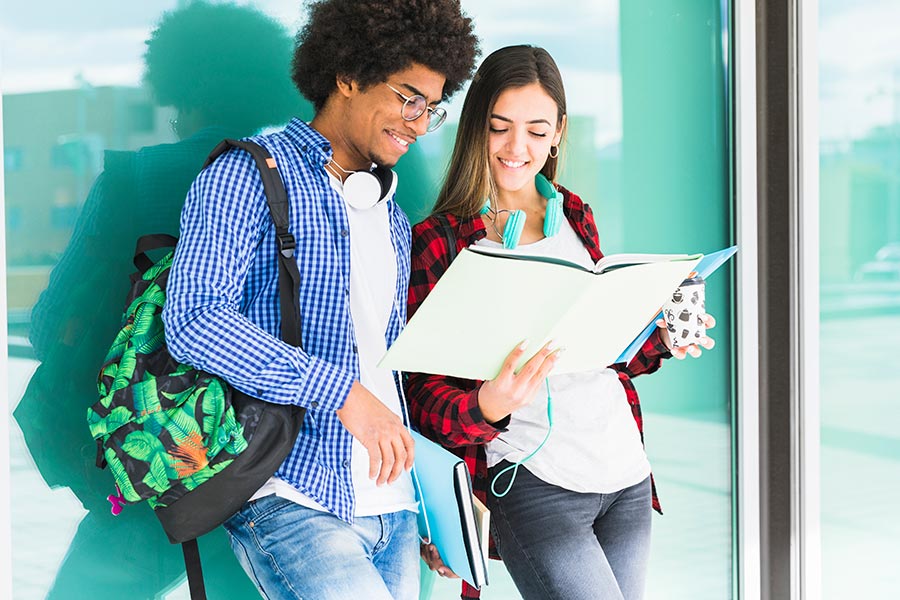In the world today, education is one of the building blocks that sets the pace for a brighter future for our planet as a whole and at the forefront, our students, who are the leaders of tomorrow should be well catered for to ensure the continuous growth and development of our economy. It is no news that education is the right of every child but currently, the world finds itself in a sticky situation where about 24 million students globally are at risk of not returning or attending school.
How best can we help these students? At-risk students are usually not at fault in these circumstances but with the right amount of support and care these students can hold faith in their prosperous future. Sadly, it is not rare to find at-risk students all over the world and this is because they face various socio-economic factors like lack of support, academic challenges, and even behavioral issues that make them unable to attend school. Notwithstanding, when provided with the right support and alternatives for learning the flames of their academic growth would not be put out. In this article, we will discuss a few ways through which alternative high school programs positively impact at-risk students and improve their educational journey.
A More Personalized Learning Experience
The major difference between alternative high schools and traditional high schools is the provision of a more personalized learning experience, an experience tailored to each student. With a smaller number of students and learning spaces, the educator can relate better with the students and provide a more personalized plan to make sure each student grows academically. This not only reduces the burden on the teachers’ part but also ensures the students have their educators’ undivided attention. This tailored style allows the students to receive proper attention and support to overcome their academic difficulties and show off their true academic potential.
Learning At A Desirable Pace
Alternative high schools allow students to learn at their own speed without any pressure and stress that may cause more academic troubles. This builds a more flexible learning experience and ensures students progress according to their personal academic needs and learning strengths. This is helpful, especially for students who have trouble keeping up with the traditional learning environment because of a mix of different teaching styles, learning styles, personal challenges, or even academic challenges. By learning at a desired pace, students are in no rush or academic competition and can learn effectively and achieve proficiency in subjects and topics before moving forward to higher subjects. Personalized pace is important because it ensures students receive the best attention to promote their own academic growth.
Improving Good Behavior
Students display good character when engaging in a supportive academic space. This is because it involves recognizing and rewarding positive behavior and this helps students to build a much better image of themselves and ultimately boost their confidence and self-esteem. Students who may have been exposed to negative vices, associated with bullying, or faced disciplinary action in traditional school settings are met with a more calming learning environment. This makes students more open to learning and reduces stress–stress brought about by a negative atmosphere. In the traditional setting, students may not be close enough to their educators but in alternative schools, it is easy to support students and create a more positive attitude.
Specialized and Modern Curricula
Making good use of a special and modern curriculum with a well curated mix of online learning and practical approaches offer benefits to at-risk students. Combining subjects and tailoring them to students’ exact needs helps to create a much better learning experience. This method plays to the academic strengths of students and seeks to resolve any academic weaknesses that may exist in order to provide a better learning experience. With flexible and specialized curricula, alternative high schools can customize their sessions to meet the direct needs of any at-risk student and in doing so, also introduce personal skill training and offer more hands-on learning opportunities. Practical learning properly prepares students and ensures they have the right mindset to tackle practical problems in the future.
Improving Graduation Statistics and Reducing the Rate of Dropouts
School attendance and graduation statistics are very important globally and they are greatly improved or assisted by alternative high schools. This is because alternative high schools ensure students are in school rather than not. These schools empower students with more than traditional schools may offer. By adapting to each student’s needs and offering flexible learning periods and curricula, at-risk students gain more than just academic prowess, but also improve themselves personally. Dropout rates would be on a steady decline and at risk students would stand a chance to get into higher academic institutions. Alternative high schools also provide counseling services to ensure students steer clear of negative vices that may jeopardize their chances at academic success.
Conclusion
Traditional schooling is good, but for others, alternative high school provides a much better and a more targeted learning experience and it improves the chances of academic success, especially for at-risk students. Students have different learning habits, patterns, styles, speeds and mannerisms that help their academic journey. Embracing these strengths and offering a variety of academic support styles through alternative schools can provide the necessary edge for at-risk students to thrive and grow academically.

